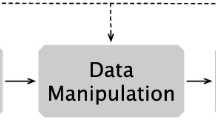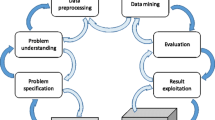Abstract
The type of the workload on a database management system (DBMS) is a key consideration in tuning the system. Allocations for resources such as main memory can be very different depending on whether the workload type is Online Transaction Processing (OLTP) or Decision Support System (DSS). A DBMS also typically experiences changes in the type of workload it handles during its normal processing cycle. Database administrators must therefore recognize the significant shifts of workload type that demand reconfiguring the system in order to maintain acceptable levels of performance. We envision intelligent, autonomic DBMSs that have the capability to manage their own performance by automatically recognizing the workload type and then reconfiguring their resources accordingly. In this paper, we present an approach to automatically identifying a DBMS workload as either OLTP or DSS. Using data mining techniques, we build a classification model based on the most significant workload characteristics that differentiate OLTP from DSS and then use the model to identify any change in the workload type. We construct and compare classifiers built from two different sets of workloads, namely the TPC-C and TPC-H benchmarks and the Browsing and Ordering profiles from the TPC-W benchmark. We demonstrate the feasibility and success of these classifiers with TPC-generated workloads and with industry-supplied workloads.
Similar content being viewed by others
References
Agrawal, S., Chaudhuri, S., & Narasayya, V. (2001). Automated selection of materialized views and indexes for SQL databases. In Proceedings of 27th VLDB conference (pp. 20–31), Rome, Italy.
Ailamaki, A., DeWitt, D., Hill, M., & Wood, D. (1999). DBMSs on a modern processor: Where does time go? In Proceedings of international conference on very large data bases (pp. 266–277).
Barroso, L., Gharachorloo, K., & Bugnion, E. (1998). Memory system characterization of commercial workloads. In Proceedings of the 25th international symposium on computer architecture (pp. 3–14).
Brown Associates, D. (2000). DB2 UDB vs. Oracle8i: Total cost of ownership. Port Chester, NY: D.H. Brown Associates, Inc. Retrieved from http://www.breakthroughdb2.com/.
Chaudhuri, S., & Narasayya, V. (2000). Automating statistics management for query optimizers. In Proceedings of 16th international conference on data engineering. San Diego, USA.
Dan, A., Yu, P., & Chung, J. (1995). Characterization of database access pattern for analytic prediction of buffer hit probability. Very Large Data Bases (VLDB) Journal, 4(1), 127–154.
Elnaffar, S. (2004). Towards workload-aware DBMSs: Identifying workload type and predicting its change. PhD thesis, Queens University at Kingston, Canada (November).
Elnaffar, S., & Martin, P. (2002). Characterizing computer systems’ workloads. Technical Report 2002-461, Queen’s University.
Elnaffar, S., & Martin, P. (2006). The psychic-skeptic prediction framework for effective monitoring of DBMS workloads (submitted).
Fox, A., & Patterson, D. (2003). Self-repairing computers. In Scientific American. Retrieved from http://www.sciam.com.
Ganek, A., & Corbi, T. (2003). The dawning of the autonomic computing era. IBM Systems Journal, 42(1), 5–18.
Hsu, W., Smith, A., & Young, H. (2001). Characteristics of production database workloads and the TPC benchmarks. IBM Systems Journal, 40(3), 781–802.
IBM Corp. (1999). DB2 Intelligent Miner for Data. Retrieved from http://www-4.ibm.com/software/data/iminer/fordata/about.html.
IBM Corp. (2000). DB2 Universal Database Version 7 Administration Guide: Performance.
IBM Corp. (2003). DB2 Universal Database Version 8.1 Administration Guide: Performance.
Lightstone, S., Schiefer, B., Zillio, D., & Kleewein, J. (2003). Autonomic computing for relational databases: The ten-year vision. In Proceedings of workshop on autonomic computing principles and architectures. Banff, Alberta.
Lohman, G., Valentin, G., Zilio, D., Zuliani, M., & Skelly, A. (2000). DB2 advisor: An optimizer smart enough to recommend its own indexes. In Proceedings of 16th IEEE conference on data engineering. San Diego, CA.
Microsoft Corp. (2002). Microsoft SQL Server 2000 Documentation.
Murthy, S. (1998). Automatic construction of decision trees from data: A multi-disciplinary survey. Data Mining and Knowledge Discovery, 2, 345–389.
Nikolaou, C., Labrinidis, A., Bohn, V., Ferguson, D., Artavanis, M., Kloukinas, C., et al. (1998). The impact of workload clustering on transaction routing. Technical Report FORTH-ICS TR-238.
Oracle Corp. (2001a). Oracle 9i Manageability Features. An Oracle White Paper. Retrieved from http://www.oracle.com/ip/deploy/database/oracle9i/collateral/ma_bwp10.pdf.
Oracle Corp. (2001b). Oracle9iDatabase Performance Guide and Reference, Release 1(9.0.1), Part# A87503-02.
Oracle Corp. (2001c). Oracle 9i Materialized Views. An Oracle White Paper. Retrieved from http://technet.oracle.com/products/oracle9i/pdf/o9i_mv.pdf.
Oracle Corp. (2002). Query Optimization in Oracle 9i. An Oracle White Paper. Retrieved from http://technet.oracle.com/products/bi/pdf/o9i_optimization_twp.pdf.
Sapia, C. (2000). PROMISE: Predicting query behavior to enable predictive caching strategies for OLAP systems. In Proceedings of the second international conference on data warehousing and knowledge discovery (pp. 224–233).
Shafer, J., Agrawal, R., & Mehta, M. (1996). SPRINT: A scalable parallel classifier for data mining. In Proceedings of the 22th international conference on very large databases. Mumbai (Bombay), India.
Stillger, M., Lohman, G., Markl, V., & Kandil, M. (2001). LEO—DB2’s LEarning optimizer. In Proceedings of 27th VLDB conference (pp. 19–28). Rome, Italy.
TPC (1999a). Benchmark D Standard Specification Revision 2.1, Transaction Processing Performance Council.
TPC (1999b). Benchmark H Standard Specification Revision 1.3.0, Transaction Processing Performance Council.
TPC (2001a). Benchmark C Standard Specification Revision 5.0, Transaction Processing Performance Council.
TPC (2001b). Benchmark W (Web Commerce) Standard Specification Revision 1.7, Transaction Processing Performance Council.
Yu, P., & Dan, A. (1994). Performance analysis of affinity clustering on transaction processing coupling architecture. IEEE Transactions on Knowledge and Data Engineering, 6(5), 764–786.
Author information
Authors and Affiliations
Corresponding author
Rights and permissions
About this article
Cite this article
Elnaffar, S., Martin, P., Schiefer, B. et al. Is it DSS or OLTP: automatically identifying DBMS workloads. J Intell Inf Syst 30, 249–271 (2008). https://doi.org/10.1007/s10844-006-0036-6
Received:
Revised:
Accepted:
Published:
Issue Date:
DOI: https://doi.org/10.1007/s10844-006-0036-6




